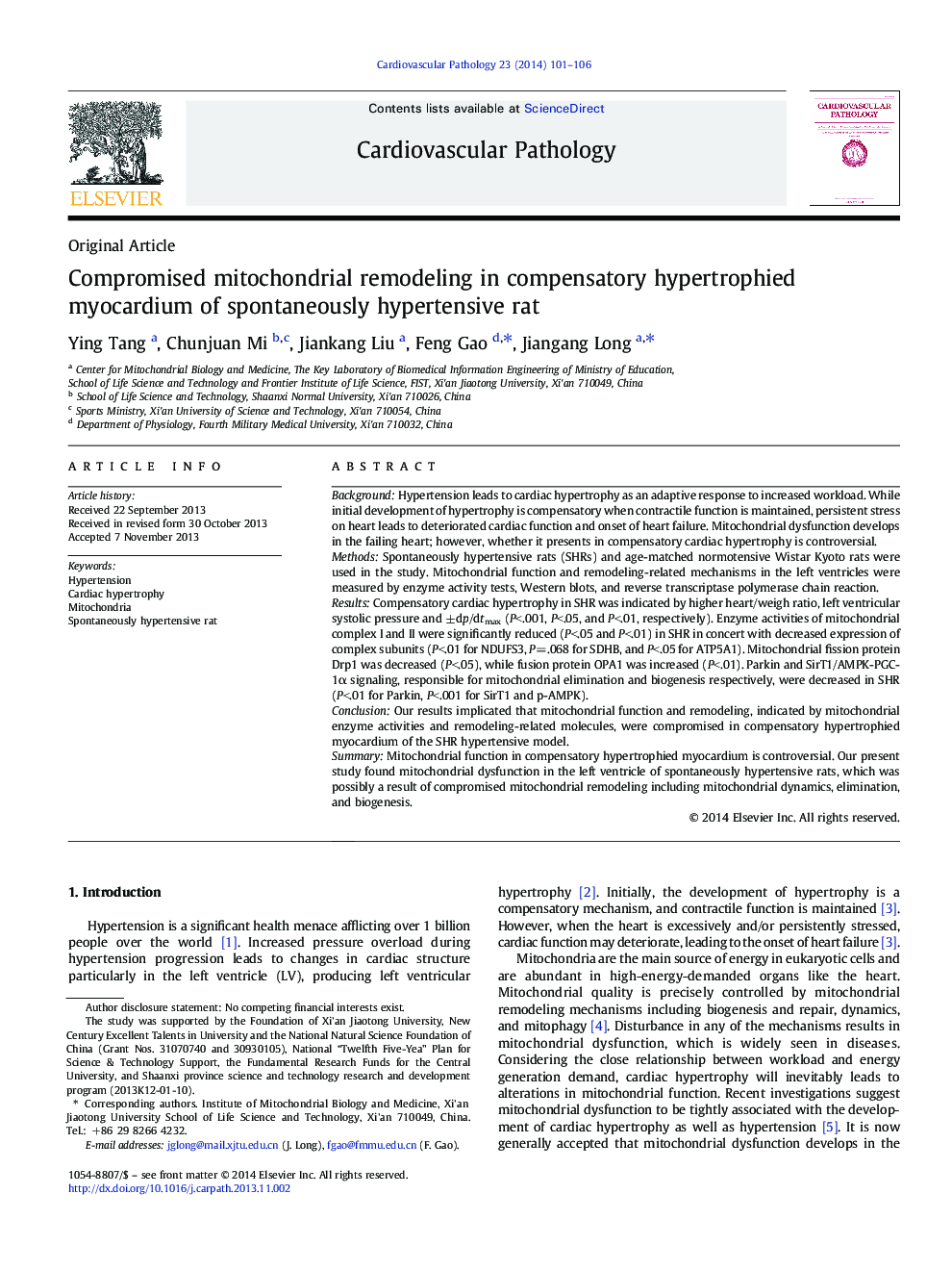| Article ID | Journal | Published Year | Pages | File Type |
|---|---|---|---|---|
| 2898705 | Cardiovascular Pathology | 2014 | 6 Pages |
BackgroundHypertension leads to cardiac hypertrophy as an adaptive response to increased workload. While initial development of hypertrophy is compensatory when contractile function is maintained, persistent stress on heart leads to deteriorated cardiac function and onset of heart failure. Mitochondrial dysfunction develops in the failing heart; however, whether it presents in compensatory cardiac hypertrophy is controversial.MethodsSpontaneously hypertensive rats (SHRs) and age-matched normotensive Wistar Kyoto rats were used in the study. Mitochondrial function and remodeling-related mechanisms in the left ventricles were measured by enzyme activity tests, Western blots, and reverse transcriptase polymerase chain reaction.ResultsCompensatory cardiac hypertrophy in SHR was indicated by higher heart/weigh ratio, left ventricular systolic pressure and ±dp/dtmax (P<.001, P<.05, and P<.01, respectively). Enzyme activities of mitochondrial complex I and II were significantly reduced (P<.05 and P<.01) in SHR in concert with decreased expression of complex subunits (P<.01 for NDUFS3, P=.068 for SDHB, and P<.05 for ATP5A1). Mitochondrial fission protein Drp1 was decreased (P<.05), while fusion protein OPA1 was increased (P<.01). Parkin and SirT1/AMPK-PGC-1α signaling, responsible for mitochondrial elimination and biogenesis respectively, were decreased in SHR (P<.01 for Parkin, P<.001 for SirT1 and p-AMPK).ConclusionOur results implicated that mitochondrial function and remodeling, indicated by mitochondrial enzyme activities and remodeling-related molecules, were compromised in compensatory hypertrophied myocardium of the SHR hypertensive model.SummaryMitochondrial function in compensatory hypertrophied myocardium is controversial. Our present study found mitochondrial dysfunction in the left ventricle of spontaneously hypertensive rats, which was possibly a result of compromised mitochondrial remodeling including mitochondrial dynamics, elimination, and biogenesis.
